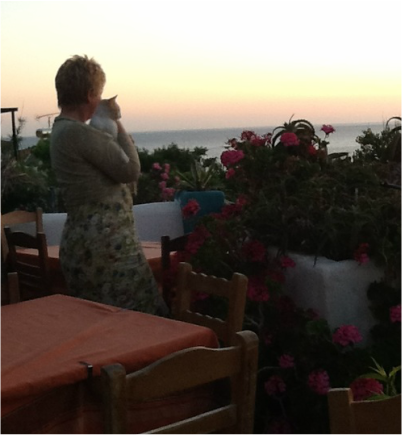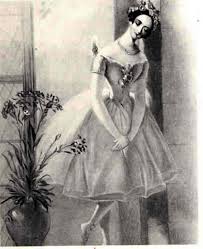|
On the last afternoon of our stay on the wild and remote island of Ikaria, as we wandered back up the cliff path from the beach, we encountered a woman crouching in the lee of the rocks with the tiniest of the cats that frequented our tavern at every meal time. She was feeding the cat high-nutrition cat biscuits, which the animal devoured eagerly. We stopped to talk.
Barbara is one of those people devoted to helping suffering creatures, and in Greece (as in many countries) there is no shortage. She organises a neutering programme with vets from the Netherlands and Ireland who give their services freely. She also goes into schools to try to educate the children about animal welfare. As well as this, when possible, she takes cats out of the country to re-home in Germany – an expensive and complicated operation by ferry, as the planes to the mainland have no space for a cat in a box. The little cat she was feeding was the sweetest creature, very friendly and affectionate, and it was comforting to know she would have a good home in the future. Barbara told us stories about the suffering of dogs up in the mountains, chained to tin drums – too hot in the summer, too cold in the winter; of how the cats are poisoned at the end of the tourist season; of places where dogs die of starvation on the doorstep in front of their keepers. We’d had a distressing visit to a restaurant earlier in the week, where the cats were starving, mange-ridden, and frightened of the restaurateur, who kicked them, so it was heart-warming to meet her. It takes someone with dogged determination, abundant kindness, and perhaps an obsessive nature, to spend so much time and money to change the lives of the Greek cats. It can be argued that we shouldn’t give time to animals when there’s so much human suffering, but I think kindness, wherever it’s given is a force for hope. And we all need that.
0 Comments
Last week one of my adult ballet class students gave me, as a joke, a twig of blossom she’d picked on the way down to the studio. Immediately I was reminded of The Rose Adagio, a dance I learnt at least forty years ago at the Hammond School of Ballet, and miraculously still remember.
The Rose Adagio was the crowning glory of the RAD New Syllabus, devised in the mid-seventies for teenage girls who had basic ballet training but were never going to make it in the ballet world. Inspired by the lithographs of ballerinas like Marie Taglioni and Fanny Elssler, it was a pastiche of Romantic Ballet, and whilst maintaining some of the rigour of ballet training, it was intended to satisfy our need to feel we were really dancing. Lord knows what any teenage boy would have made of it – it was so camp. But there was no necessity to devise such a syllabus for boys. Any young male who braved ballet school was taken very seriously, and was sure to be training for the real thing. We all had to bring an artificial rose to class. My rose was a large red plastic affair, covered in a kind of fabric like flock wallpaper. It lacked subtlety. The rose was held between the fingers and thumb of the right hand, and we gazed at it as we linked arabesques with glissades and running steps, and in one glorious moment knelt to drink in its scent. I have a vague recollection of sprinkling mine with eau de cologne. Finally, sinking down to place our rose on the floor, fingertips just touching our left cheekbone, we shook our heads – sadly. The whole narrative of love – gained, lost and recalled in solitude – was over in twenty four bars of music. One day Mrs Hassall informed us she was going to choose someone to dance The Rose Adagio solo as part of the school show at the Gateway Theatre, so we were all asked to dance it through several times under her scrutiny. I knew it in my sleep, and thought I was in with a chance, especially as I’d been praised a fair bit that term for my expressive quality – until I heard her whispering to the pianist, ‘Just look at Catherine Bird. So lovely!’ Catherine Bird was a small, neat girl, very intelligent and musical, and she was duly given the part. I remember watching her, rather wistfully, from the wings of the theatre, and feeling somehow as if I’d been denied a great honour. I couldn’t understand what it was that marked her as special. I didn’t realise then that Catherine just looked right before she even started to move – unlike the rest of us gangly pubescent girls. That goes a long way in the world of ballet. It was all long ago, but I’m left with this ridiculous little dance so deeply rooted in my body that I can sing the music as I dance it through – and despite my sense of irony – an understanding of the many facets of the strange world of ballet – the beauty, the cruelty, the absurdity of it all. |
AuthorTricia Durdey dances, writes, and teaches Pilates. Archives
October 2017
|


 RSS Feed
RSS Feed